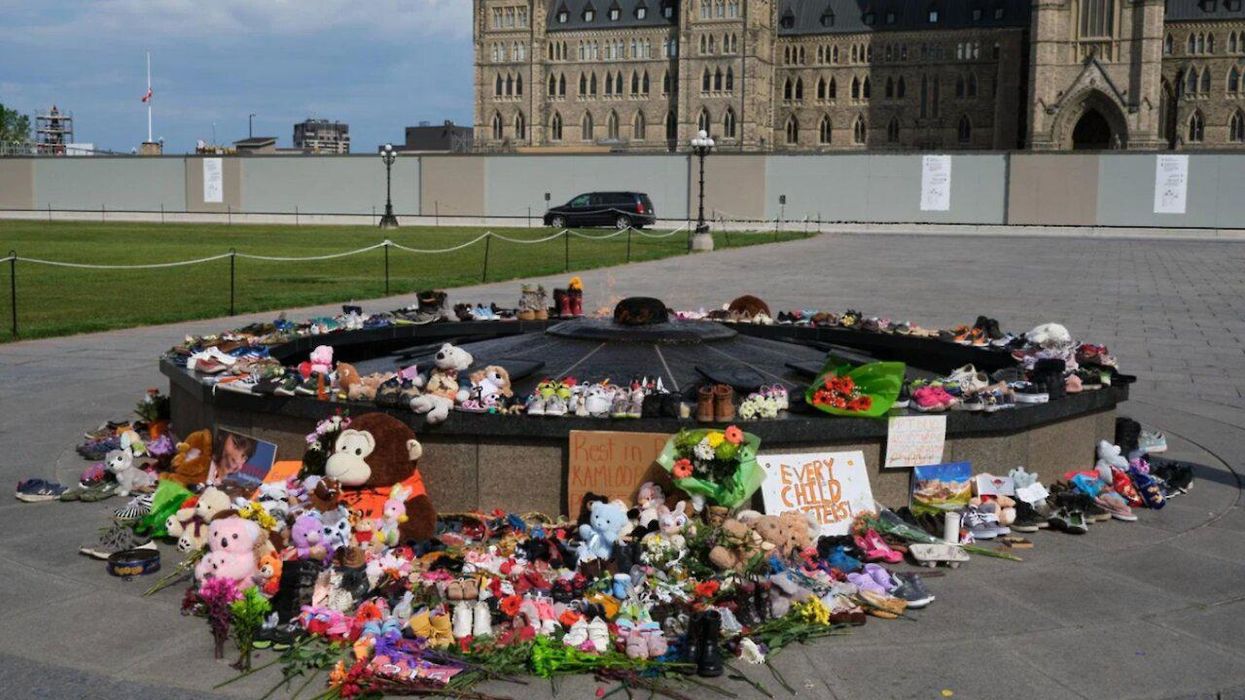Ontario Had At Least 18 Residential Schools & Here's Where They Were
One of the schools closed 30 years ago in 1991.

This article contains graphic content that might not be suitable for some readers.
Canada's residential school system was recently described by the Prime Minister as a "dark and painful" part of the nation's history.
Residential schools were created by the Canadian government and run by churches from the 1830s until 1996. They've been described as "a systematic, government-sponsored attempt to destroy Aboriginal cultures and languages and to assimilate Aboriginal peoples so that they no longer existed as distinct peoples" by The Truth and Reconciliation Commission of Canada.
While it's impossible to determine the exact number of residential schools that existed in Canada, at least 18 of them were in Ontario.
Where were Ontario's residential schools located?
The Truth and Reconciliation Commission has identified 18 schools in the province, but this list is only made up of the schools that operated with federal government support and does not represent the total number of residential schools that existed in Ontario.
Several residential schools were renamed, relocated or merged together throughout the years, so this list of schools is based on the Indian Residential Schools Settlement Agreement.
- Bishop Horden Hall (Moose Fort, Moose Factory), Moose Factory Island
- Cecilia Jeffrey (Kenora, Shoal Lake), Kenora
- Chapleau (St. John's), Chapleau
- Cristal Lake, Northwestern Ontario
- Fort Frances (St. Margaret's), Fort Frances
- Fort William (St. Joseph's), Fort William
- McIntosh, McIntosh
- Mohawk Institute, Brantford
- Mount Elgin (Muncey, St. Thomas), Munceytown
- Pelican Lake (Pelican Falls), Sioux Lookout
- Poplar Hill, Poplar Hill
- St. Anne's (Fort Albany), Fort Albany
- St. Mary's (Kenora, St. Anthony's), Kenora
- Shingwauk, Sault Ste. Marie
- Spanish Boys' School (Charles Garnier, St. Joseph's, formerly Wikwemikong Industrial), Spanish
- Spanish Girls' School (St. Joseph's, St. Peter's, St. Anne's, formerly Wikiwemikong Industrial), Spanish
- Stirland Lake (Wahbon Bay Academy), Stirland Lake
- Wawanosh, Sault Ste. Marie
When did the schools open and close?
Based on the Indian Residential Schools History and Dialogue Centre (IRSHDC), Mount Elgin was one of the earliest residential schools to open in 1867.
Shingwauk was in operation from 1878 onwards, and the Spanish Boys' School and Wawanosh opened in 1879. Mohawk Institute and Fort William opened in 1885.
Some of the province's residential schools, like St. Anne's in Fort Albany and St. Mary's in Kenora, closed in the 1970s, around the same time that others were opening. Stirland Lake opened in 1972 and Cristal Lake opened a few years after in 1976.
Of the residential schools listed, Stirland Lake was the last to close down in 1991.
How is Ontario helping victims and survivors of residential schools?
Earlier this month, Premier Doug Ford announced that $10 million in provincial funding will be allocated to assist with the investigations of residential school burial sites in Ontario. The federal government will also make $27 million available on an "urgent basis" for communities that would like to conduct burial searches.
The provincial government says it will work alongside Indigenous leaders to identify, investigate, protect and commemorate the sites of residential schools in Ontario.
Government funds will also be used to provide adequate trauma-informed mental health supports for residential school survivors, their families, and Indigenous communities.
The Truth and Reconciliation Commission says that approximately 426 children died while attending residential schools in Ontario, with an unknown number still missing. They also identified 12 locations of unmarked burial sites in the province.
- National Day For Truth & Reconciliation Is Now A Holiday In Canada ... ›
- Residential School Sites In Canada: Feds Commit Millions For More ... ›
- Orange Shirt Day: This Map Shows Where Residential Schools ... ›
- Residential School Burial Sites Will Be Investigated By Ontario ... ›
- 182 Unmarked Graves Found Near Former BC Residential School - Narcity ›
- Canada's Catholic Bishops Are Apologizing For Their Role In The Residential School System - Narcity ›
- 54 Possible Unmarked Graves Have Been Discovered By Keeseekoose First Nation In Saskatchewan - Narcity ›
- The US Found 500 Indigenous Graves At Boarding Schools & It Looks Like Canada All Over Again - Narcity ›
